Having a cupboard full of flavoured vinegars at your disposal is a great way to brighten almost any dish. Infusing vinegar is so easy and foolproof it really is something everyone should try especially considering there are so few choices available at most supermarkets.
Table of Contents
Flavouring Vinegar By Infusing
Almost any dish can be heightened by adding acidity. It is one of the flavours and sensations that can make things taste brighter.
Vinegar is clearly an easy way to bring acidity to a dish and by infusing vinegar with other flavours you can introduce even more flavour in a unique way.
The process of infusing vinegar is simple and because vinegar is acidic you do not have to worry about bacteria or any spoilage like you do with things like infused oils.
Infused Vinegar Is Not The Same As Making Fruit Vinegars
Infusing vinegar is a case of taking a finished vinegar and adding ingredients to flavour it. Fruit vinegars are made by fermentation of fruit and sugar into alcohol and then into vinegar the results are not quite the same.
The beauty of infusing finished vinegar is that the results are much quicker and the amount of ingredients that can be combined with the vinegar is much wider.
What To Flavour Vinegar With?
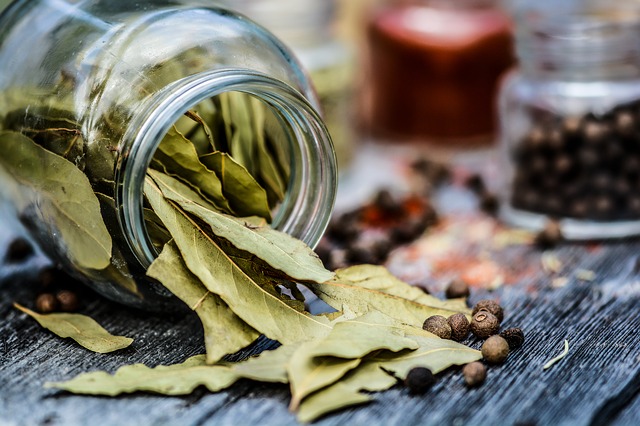
This is time to get creative as there are so many options for things to infuse in vinegar but to categorize them I would suggest the following:
- Herbs
- Fruit
- Spices
- Vegetables
- Floral
The thing to look for are flavourful ingredients that are generally good to eat raw so there is a whole lot of possibilities right here and we will explore some of the best combinations of these in a moment.
What Vinegar To Use?
Not only are there a whole plethora of different possibilities when it comes to ingredients to infuse there is also the vinegar itself.
in a lot of cases you are going to want to use neutral or delicately flavoured vinegar. Anything too strong such as malt vinegar will overpower the flavour of what you are infusing in it.
Vinegar such as:
- White vinegar
- Apple cider vinegar
- Wine vinegar
- Rice vinegar
Make good choices as they are less strongly flavoured. That is not to say you cannot use powerful vinegars such as balsamic vinegar it is just a case of infusing it with something stronger tasting.
Onions infused in balsamic vinegar are strongly flavoured enough to make a great combination.
Aim For Vinegar With 5% Acidity
Whatever vinegar you are flavouring you want to try and ensure it is at least 5% acidity. Adding ingredients to vinegar is almost the same as pickling and this ensures bacteria cannot grow whilst your vinegar is infusing.
Vinegar with high acidity is also a solvent and helps extract more flavour from your ingredients.
Invest In Good Quality Vinegar
Try to use the best vinegar you can afford. If you start with vinegar that isn’t that good to begin with infusing it won’t make it better.
That is not to say you should buy the most expensive vinegar. Using an expensive aged balsamic or sherry vinegar for example is probably a little excessive.
These kinds of vinegar are highly flavourful and enjoyable as they are, infusing them with additional flavour will see limited returns. More modestly priced balsamic or sherry vinegar is great to infuse with new flavours
What You’ll Need To Flavour Vinegar
There are only a few things you will need to start making your own flavoured vinegars and you’ll probably have most of the equipment already. I like to use the following:

Wide Mouthed Mason Jar: This is the vessel we will add the ingredients we want infused with the vinegar.
Coffee Filter / Cheesecloth: The vinegar will need straining once the ingredients have been infused. A tightly weaved cheesecloth or a coffee filter will remove nearly everything so you end up with a nice clear vinegar.

Bottles: I like to strain my flavoured vinegars into bottles that means they are easier to pour and serve. Whilst not strictly necessary a decorative bottle does create a great looking finished product.

Funnel: For getting the infused vinegar into the bottle. You can sit the filter paper or cheesecloth in the funnel and pour the vinegar from the jar straight in.
The Process Of Infusing Vinegar
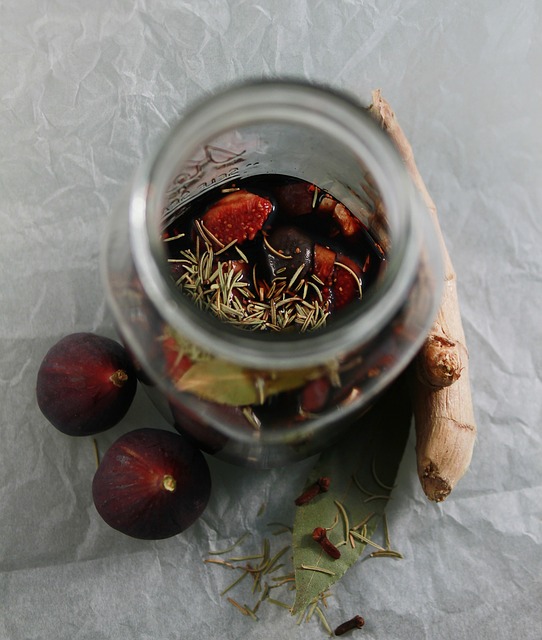
Making infused vinegar in its most simplest form is simply a case of combining ingredients and vinegar and letting it steep for a week or so. It really is that simple, in some instances however, you may want to add additional steps to the process depending on what you are steeping.
Sweetening Your Infused Vinegar
Once you have infused vinegar you may want to consider sweetening it with a little sugar, honey or maple syrup for example.
It is down to personal taste and is not something I do very often. Taste the vinegar and decide whether it is balanced as it is. Adding some sweetness can sometimes really open up the flavours.
In most cases if you are making a dressing for example you can always add sugar to the dressing rather than the vinegar.
Making Herb Vinegar & Floral Vinegar
Making herb infused vinegar requires more herbs than you realise. I like to use roughly 1 cup of herbs to 2 cups of vinegar.
A basil vinegar for example would need 1 cup of basil leaves to 2 cups of vinegar. Rosemary vinegar would require enough sprigs to take up half the volume of the jar you are infusing it in.
Add the vinegar to the herbs to a sterilised jar and allow to steep in the fridge for a week. Taste the vinegar and decide whether it is strong enough for your taste. If it is strain it and decant to a sterilised bottles and store until ready to use. If you need a stronger flavour add more herbs and allow to steep again before packaging in a bottle.
Making Spiced Vinegar
To make spiced vinegar another step in the process is beneficial and that is heating the vinegar. Where most infused or flavoured vinegars heat would drive off the delicate flavours we are trying to capture, woody spices release more flavour when heated.
Essential oils in spices like peppercorns, cinnamon, coriander & cumin seeds are released when heated. They can be toasted in a pan before being added to vinegar or added to vinegar that is just below a simmer.
In most cases I would try to use whole spices instead of ground when available to take it easier to strain out the spices.
To make a clove, peppercorn and coriander vinegar for example add the spices and vinegar to a pan, gently heat the vinegar to 70°C / 158°F and remove from the heat. Add the mixture to a sterilised jar to infuse the vinegar. Taste after a week and tweak if necessary then strain through a fine filter paper into sterilised bottles.
If you are combining fruit and spices you may want to consider not heating the vinegar, it is really a matter of personal preference.
Making Fruit Flavoured Vinegar
Fruit flavoured vinegars are made in a similar way to herb vinegars as the flavour of a lot of fruits is quite delicate we don’t want heat to drive off those flavours.
The process is simple, place the fruit in your jar after cleaning and removing any bad parts, you may wish to mash the fruit lightly to extract flavour quicker. The amount you’ll need is personal preference. You want to reach that sweet spot where you have enough fruit to contribute plenty of flavour without going overboard.
As an example in a raspberry vinegar I would use roughly half the weight of raspberries to vinegar. In other words I would use 250 grams of raspberries for 500 ml of vinegar.
Once your fruit has steeped to your desired flavour has been reached, strain the fruit and bottle.
Infused Vinegar Combinations To Try
If you are not feeling inspired to try your own combination then here are some examples that I have made successfully in the past.
White Wine Vinegar:
Raspberry & Mint, Blueberry & Cinnamon, Clove Peppercorns & Garlic, Rosemary & Thyme
Cider Vinegar:
Peach & Basil, Tangerine & Cinnamon, Tarragon, Rose petal & Anise
Balsamic Vinegar:
Baby Onion, Ginger, Chillies & Coriander
Rice Wine Vinegar:
Ginger & Horseradish, Plum & Rose petal, Apple & Elderflower
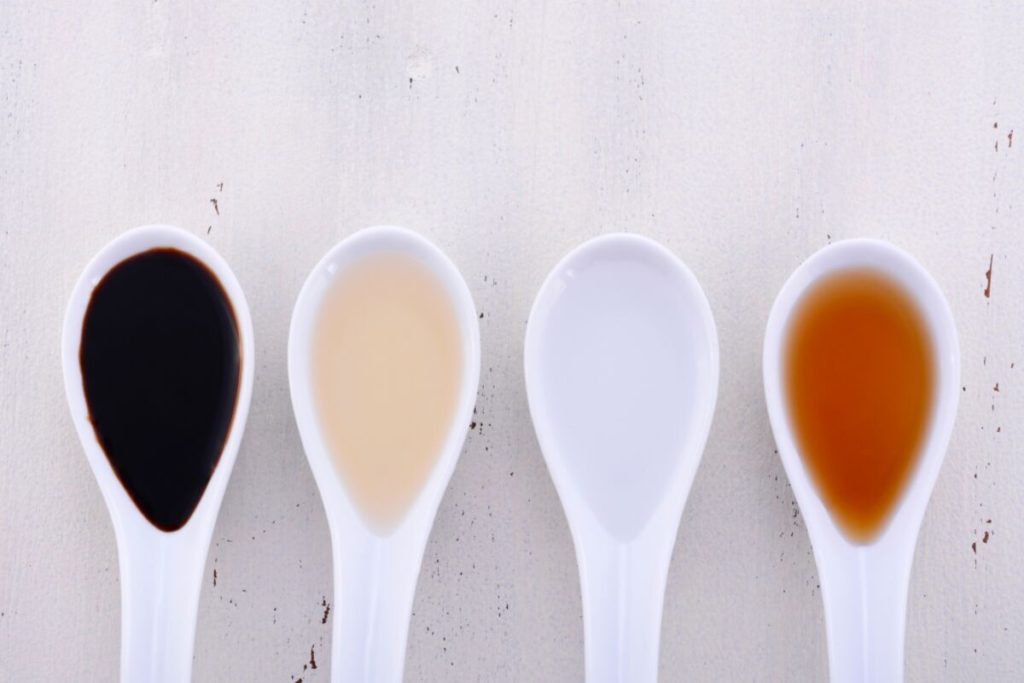
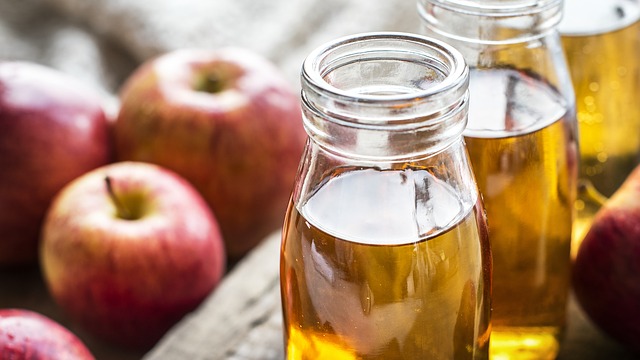
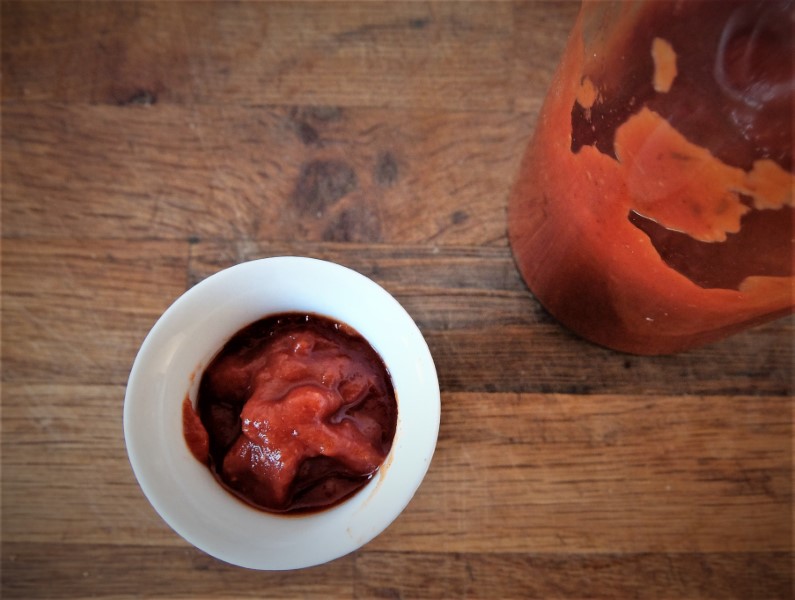
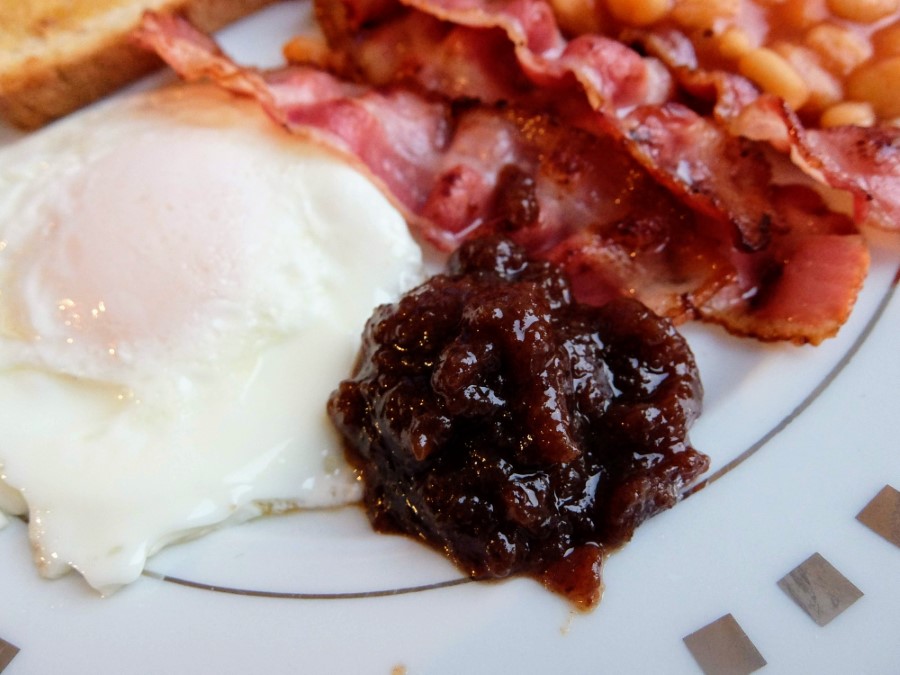
Thanks for the post, I’m making my own vinegar but haven’t had much luck creating my own mother.
The local organic store is willing to give me their own mother as they throw it out every 4 weeks.
Can I add a wine/vinegar mixture that hasn’t fermented to the mother to create a vinegar?
You will want to add the mother and a small amount of the vinegar to alcohol at around 6% abv. This could be diluted wine or a wine and vinegar mixture.